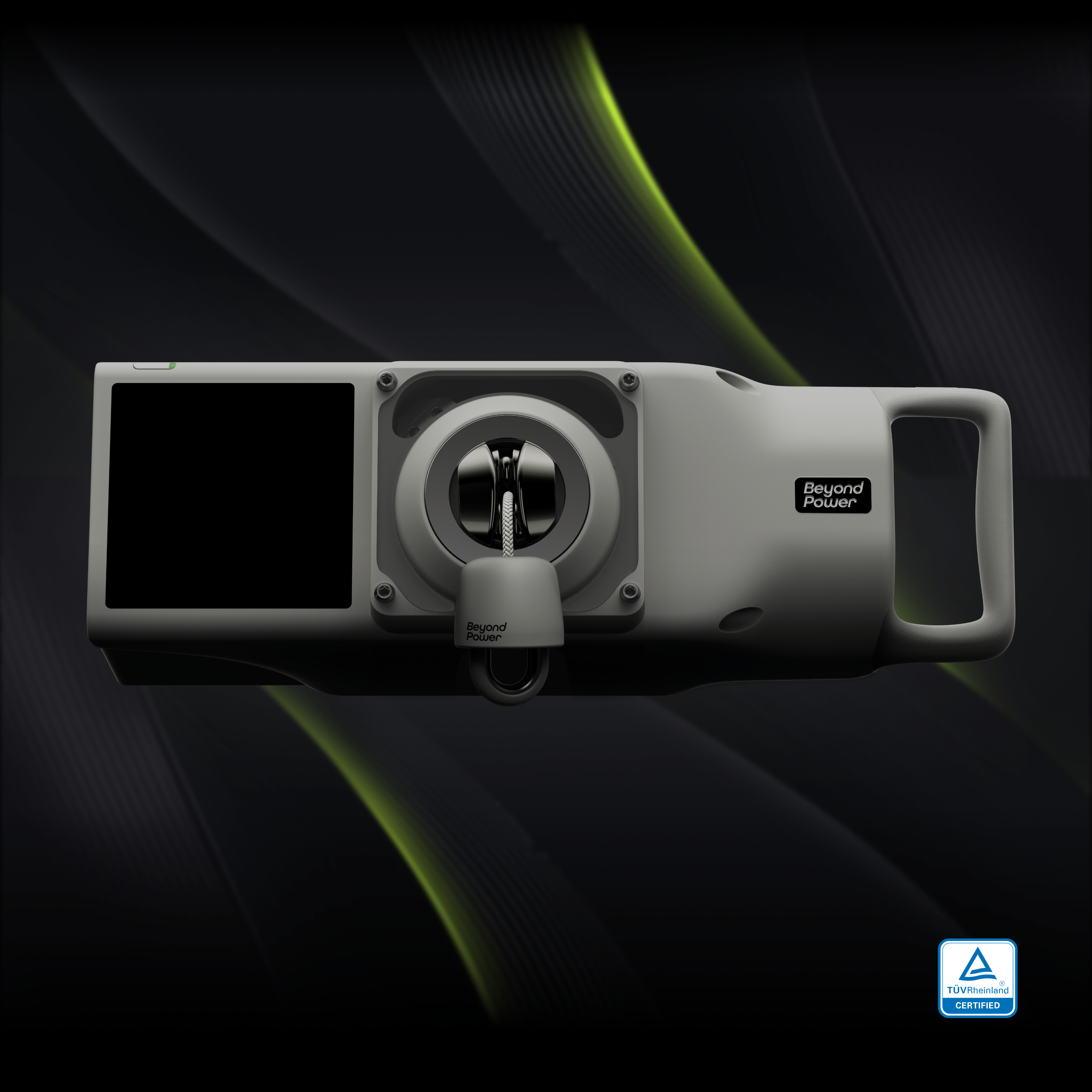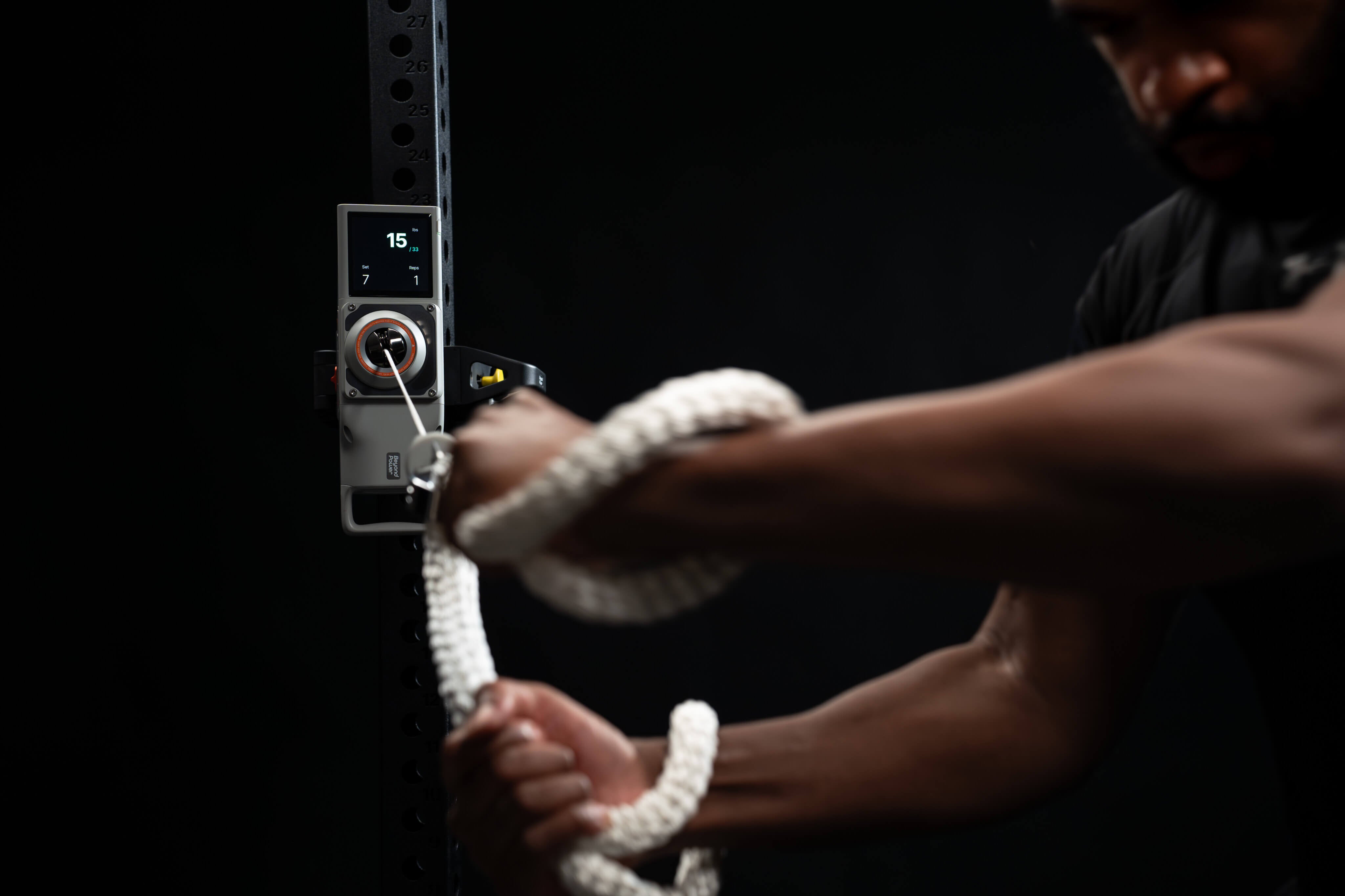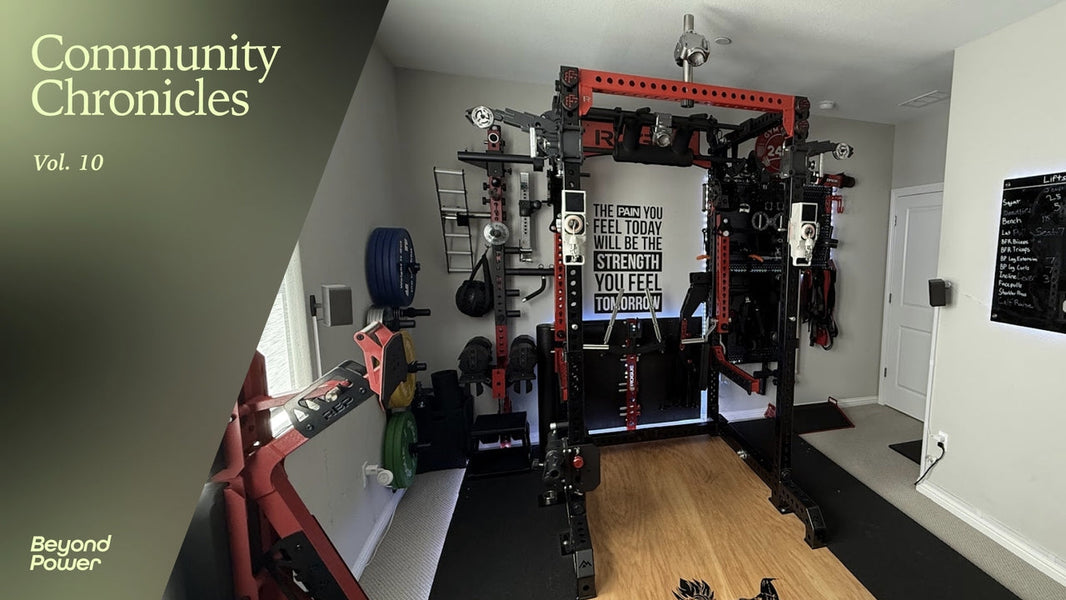Manual muscle testing leaves too much to guesswork. VOLTRA I's Isometric Test Mode gives you real numbers to track progress, identify problems, and make better decisions about training and rehabilitation.
What Is Isometric Testing?
Isometric testing measures your ability to generate force without movement at specific joint angles. This precise strength assessment has traditionally required expensive equipment found only in research labs and clinical settings like digital dynamometers..
VOLTRA I brings the same professional-grade testing used by researchers and elite sports programs directly to your gym, home, or clinic.
Research published in the Scandinavian Journal of Medicine & Science in Sports shows that isometric strength gains are angle-specific, typically occurring within 15-20 degrees of the training position.
This precision makes isometric testing invaluable for identifying weak links, tracking rehabilitation progress, and developing targeted interventions.
The VOLTRA I difference? Every metric captured in real-time, every position precisely controlled, every test completely repeatable.

When to Use Isometric Testing on VOLTRA I
For Physiotherapists and Rehabilitation Professionals
-
Replace manual muscle testing: Get actual force numbers instead of subjective ratings
- Consolidate and upgrade your toolkit: Replace digital dynamometers and measure more than just force
-
Track bilateral differences: Spot strength differences between left and right sides
-
Document recovery progress: Show insurance companies and patients concrete improvements over time
-
Test at specific angles: Position patients at whatever joint angle matters most for their condition
-
Shoulder assessments: Measure external/internal rotation strength ratios to predict throwing injuries
-
Return-to-sport decisions: Set specific force targets (like 90% of healthy side) before clearing athletes
For Strength and Conditioning Coaches
-
Sticking point analysis: Identify exact joint angles where strength deficits limit performance
-
Fatigue monitoring: RFD decay indicates neuromuscular fatigue better than traditional volume metrics
-
Athlete profiling: Create comprehensive strength maps across multiple joint angles for each movement pattern
-
Load autoregulation: Use daily isometric assessments to adjust training loads based on neuromuscular readiness
For Personal Trainers and Home Gym Users
-
Baseline establishment: Establish objective starting points for goal setting and progress tracking
-
Plateau identification: Pinpoint specific weak angles that may be limiting dynamic performance
-
Form analysis: Understand individual strength curves to optimize exercise selection and technique
-
Motivation through data: Visual progress tracking maintains engagement during challenging training phases
What the Numbers Mean
When you complete an isometric test, VOLTRA I captures six critical measurements:
-
Peak Force (N): Maximum force generated during the test. This is your absolute strength at that specific angle.
-
Rate of Force Development (RFD) 0-100ms (N/s): How quickly you can generate force in the first critical milliseconds. Higher RFD indicates better explosive strength and neural drive.
-
Time to Peak Force (s): How long it takes to reach maximum force output. Shorter times typically indicate better neuromuscular efficiency.
-
Impulse 0-100ms (N·s): The total force applied over the first 100 milliseconds. This metric combines both force magnitude and how quickly you apply it.
-
Peak Relative Force (%): Your peak force as a percentage of your body weight, providing context for strength relative to your size.
-
Test Time (s): Total duration of your maximum effort, indicating muscular endurance at high force outputs.
How to Set It Up
Initial Configuration
-
Power on your VOLTRA I and navigate to the main menu.
-
Select "Isometric Test" from the training mode options:

-
Input your body weight using the on-screen keypad for accurate relative force calculations.

Test Parameters
-
Automatic force range: VOLTRA I automatically suggests 400 lbs (1779 N) maximum.
-
Choose test duration: Select between 10 or 15 seconds based on your assessment goals.

Position Setup
-
Switch metrics view: Toggle between "Weight" and "Force" displays based on preference.

-
Adjust cable length: Pull the cable to your desired testing position and hold to set.

-
Verify positioning: Ensure proper body alignment and joint angle for your specific test.
Execute the Test
-
Prepare for testing: The screen will show "Ready for Test" with your body weight (e.g., 135 lbs displayed).

-
Begin maximum effort: Pull with maximum force when ready. The timer starts automatically.
-
Maintain effort: Sustain maximum force production throughout the test duration.
-
Review results: Immediate feedback displays all key metrics upon completion.

Real-Time Feedback: What You're Seeing During the Test
As you perform the test, VOLTRA I's display shows the following:

-
Large force number: Current force output in real-time.
-
Peak Force tracking: Highest force achieved so far.
-
RFD calculation: Instantaneous rate of force development.
-
Time to Peak: Running calculation of how long maximum force took.
-
Progress bar: Visual representation of force application over time.
The real-time nature means you can actually see your force production patterns as they happen, providing immediate biofeedback that traditional testing simply cannot match.
Amplifying Your Data with the Beyond+ App
While VOLTRA I delivers complete isometric testing independently, the Beyond+ app transforms your data into actionable insights:

-
Real-time force curve: all the data you see on VOLTRA I's screen during testing
-
Session Analysis: View detailed charts showing force patterns across multiple tests
-
Progress Tracking: Compare results over weeks and months to quantify improvements
-
Bilateral Comparisons: Side-by-side analysis of left versus right strength
-
Historical Trends: Long-term tracking of peak force, RFD, and other critical metrics
-
Data Export: CSV format for integration with other analysis tools
The beauty? Beyond+ enhances the experience but never limits it. Your VOLTRA I remains a complete testing solution with or without the app.
What Your Results Mean
-
Consistent Peak Force: Indicates reliable maximum strength at this position
-
Varying RFD: Look for patterns—fatigue typically reduces RFD while peak force may remain stable
-
Force Decay: If peak force drops significantly across multiple tests, consider recovery or loading adjustments
-
Asymmetry Patterns: Compare bilateral results to identify imbalances requiring targeted intervention
Research published in the European Journal of Applied Physiology indicates that RFD may be more sensitive to training adaptations than peak force alone, making these combined metrics particularly valuable for tracking progress.
The VOLTRA I Advantage
VOLTRA I captures force data at rates impossible with handheld dynamometers, while eliminating the variability that comes from different examiners. You get consistent, repeatable measurements every time.
The built-in motor system handles the resistance automatically, so you focus on positioning and coaching rather than trying to match force output manually. Your clients get immediate feedback, and you get objective data to guide decisions.
Whether you're a physiotherapist documenting recovery, a coach identifying performance limiters, or an athlete taking control of your own development, VOLTRA's isometric mode gives you the tools that were once reserved for research laboratories.
If you're tired of guessing at strength improvements or struggling to show progress with subjective testing methods, isometric mode gives you the numbers that matter.











1 comment
Hi,
I would like to use the voltra with the “imosetric test mode” to test my athletes on an iso belt squat using your platform. However, I would like to know if the voltra is strong enough to absorb a large amount of Newtons like force plates (Hawking or Vald for example) do during IMTP ?
Thanks,
Ben